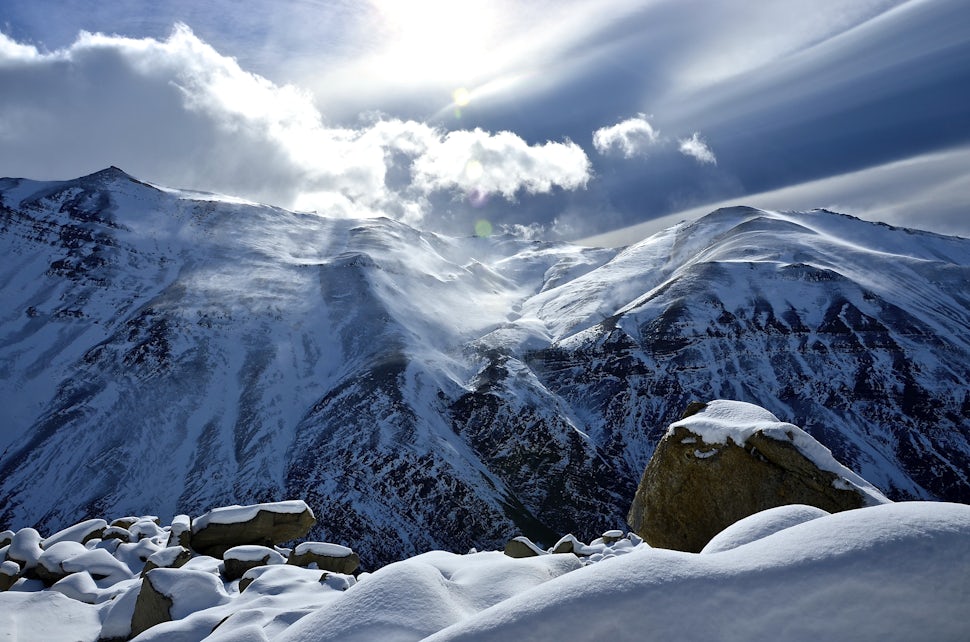If It's Winter, It's Time to Head South to Patagonia
Our winter is their summer, and our reward.

If it’s winter, it’s Patagonia.
I’ve met many a trekker and backpacker who come November, or even earlier, hang up their trekking poles and put their sleeping bag and pack away for the season.
But winter isn’t the season of the couch; it’s actually the season of exploration, by simply looking to the Southern Hemisphere.
It’s their summer obviously, and our spring is their fall.
Both winter and spring to us are wonderful times to experience their summer and fall.
In particular, I love Patagonia.
Of all of the places I have been, it is the wildest, most wind swept, desolate, surprising, and invigorating place I have ever been. And I know this will sound weird, it also has the freshest air I have ever breathed.
 Patagonia is simply raw and wild.
Patagonia is simply raw and wild. I think this is because of several things, you are close to the Chilean coast and to some degree Antarctica, there is little development of any kind, and the fierce winds (more on that in a minute) keep this pristine air blowing.
Of course all of this makes for wonderful star gazing as well, provided you aren’t so tired that you can still stick your head out of the tent and look up.

I never forget stepping out of my tent in the middle of the night to pee, looking up and being absolutely stunned. Now I have been to the Himalayas, trekked to Everest Base Camp, and I think Patagonia’s stars beat Nepal’s. It could be the absence of yak dung smoke wafting from stoves (of course that is one of the charms of Nepal), but I digress.
 Patagonia is famous for its elliptical clouds.
Patagonia is famous for its elliptical clouds.I also think that the remoteness of Patagonia, lends itself to fewer people, less development, less smog, fewer trekkers and a more pleasing experience.
For instance, to get to Torres del Paine Park in Chile, I had to fly over night (8 hours) to Santiago, Chile, then take a plane (4 hours) to Punta Arenas (home port of the Magellan Strait), then take a three hour bus ride to Puerto Natales (the jumping off point for Torres del Paine) and then in my case take a two hour boat ride into a neighboring park and then a zodiac boat ride up into the park. That last choice was for scenery, I could have driven from Puerto Natales into the park, but nevertheless, you get the idea, this place is remote.
 Hiking beneath the Paine Massif on the W Trek in Torres del Paine
Hiking beneath the Paine Massif on the W Trek in Torres del PaineGetting to Argentina’s side of Patagonia and famed Los Glaciares National Park, which houses the dramatic Fitz Roy and Cerro Torre massifs, isn’t much easier. After flying overnight to either Buenos Aires or Santiago, you then need to fly to El Calafate, then hop on a four hour bus ride.
You can do both of these by the way, Torres del Paine Park and Los Glaciares National Park in the same trip.
 Patagonia's famous winds whip water funnels sixty feet up into the air.
Patagonia's famous winds whip water funnels sixty feet up into the air.You would probably need two weeks to do these properly.
But the wildness of Patagonia is something to see now before it comes developed.

The weather and winds of Patagonia add to this sense of wilderness. My first day we encountered 90 mile per hour gusts at Grey Glacier overlook. That night, huddled in our tent, 60 mile hour winds and horizontal snow whipped our tent. The next day we were sent scrambling back down the French Valley by horizontal sleet, and on our last day we hiked up to the famous Towers in three inches of snow.
 Weather is unpredictable, even In March you can find yourself climbing in snow.
Weather is unpredictable, even In March you can find yourself climbing in snow. But I truly loved every minute of it. This was adventure.
 The famous towers that Torres del Paine Park is named after.
The famous towers that Torres del Paine Park is named after.Patagonia is a feast for the eyes and your camera. Plow through your Instagram feeds, ever notice how many shots are of the Towers, Fitz Roy and Cerro Torre.
The mountains simply frame themselves. They are rugged, fierce looking and rise stoically by themselves. Compared to the Himalayas where one majestic peak runs into another, these peaks rise up separately by themselves as if to say, “take my picture”. So framing is more graphic and heroic.
 Backpackers head off at sunrise in Torres del Paine Park.
Backpackers head off at sunrise in Torres del Paine Park. One last note: trash is noticeably absent. Unlike parts of Asia, Patagonia is simply pristine. I noticed our guide would bend down to collect even the smallest gum wrapper.
It was as if our guide was thinking it would be a sin to besmirch this pristine wilderness.
 Sailing towards Torres del Paine Park, Chile, Patagonia
Sailing towards Torres del Paine Park, Chile, Patagonia
We want to acknowledge and thank the past, present, and future generations of all Native Nations and Indigenous Peoples whose ancestral lands we travel, explore, and play on. Always practice Leave No Trace ethics on your adventures and follow local regulations. Please explore responsibly!
Do you love the outdoors?
Yep, us too. That's why we send you the best local adventures, stories, and expert advice, right to your inbox.








